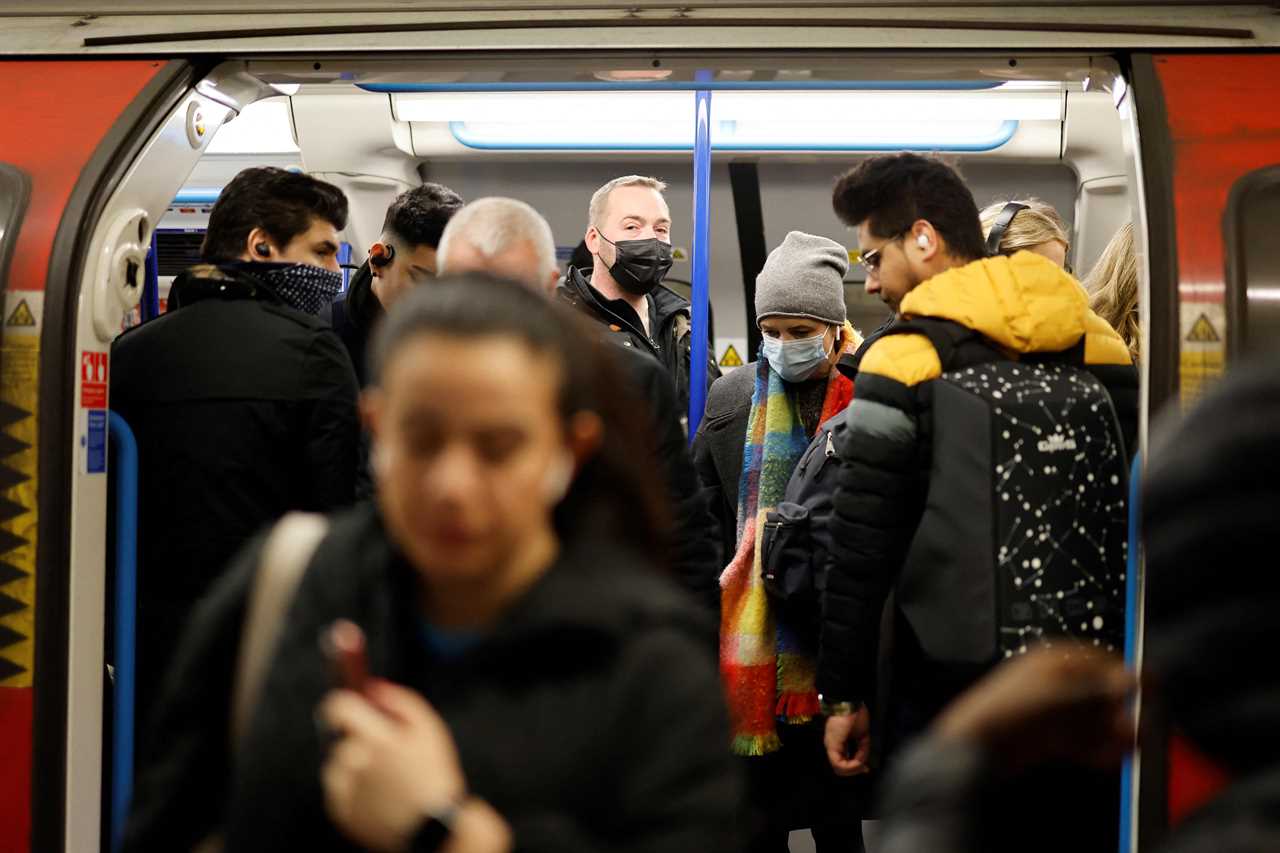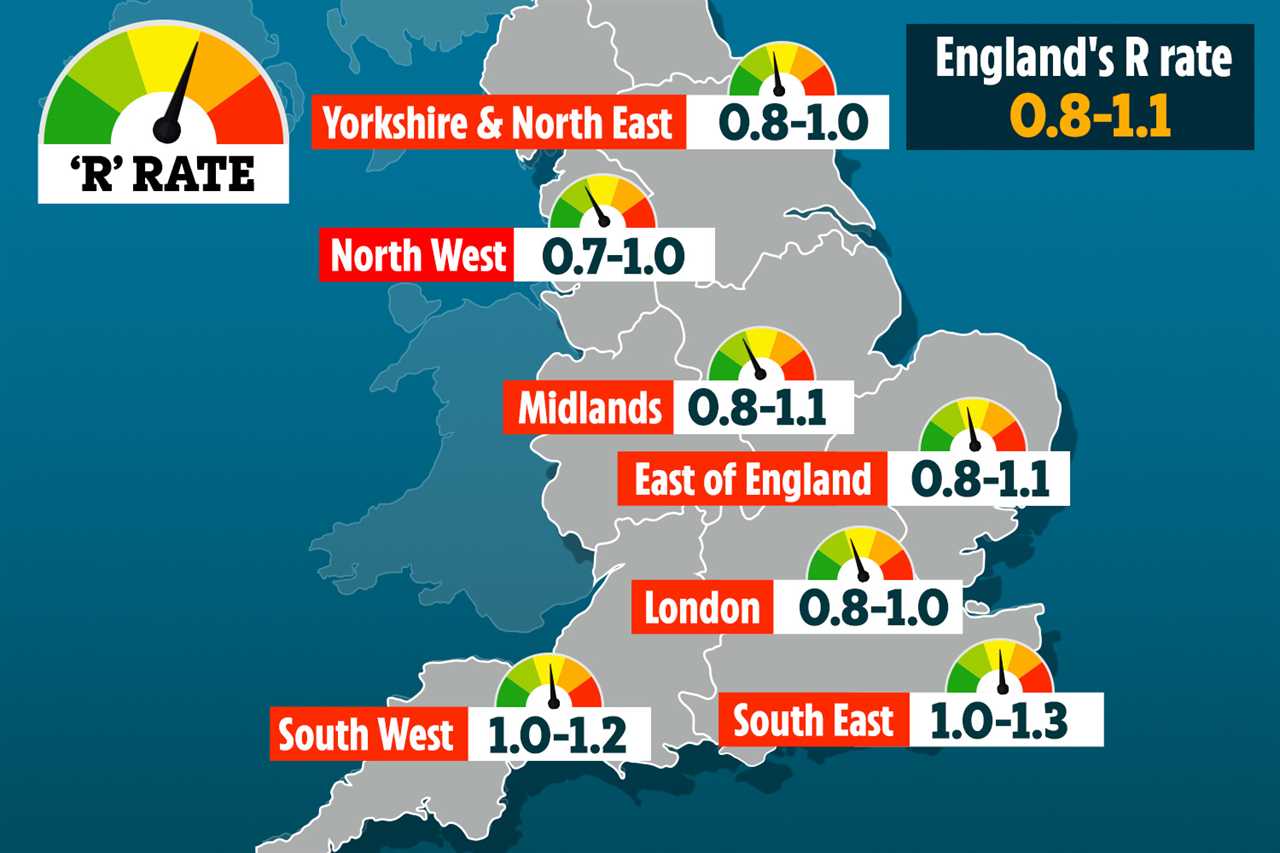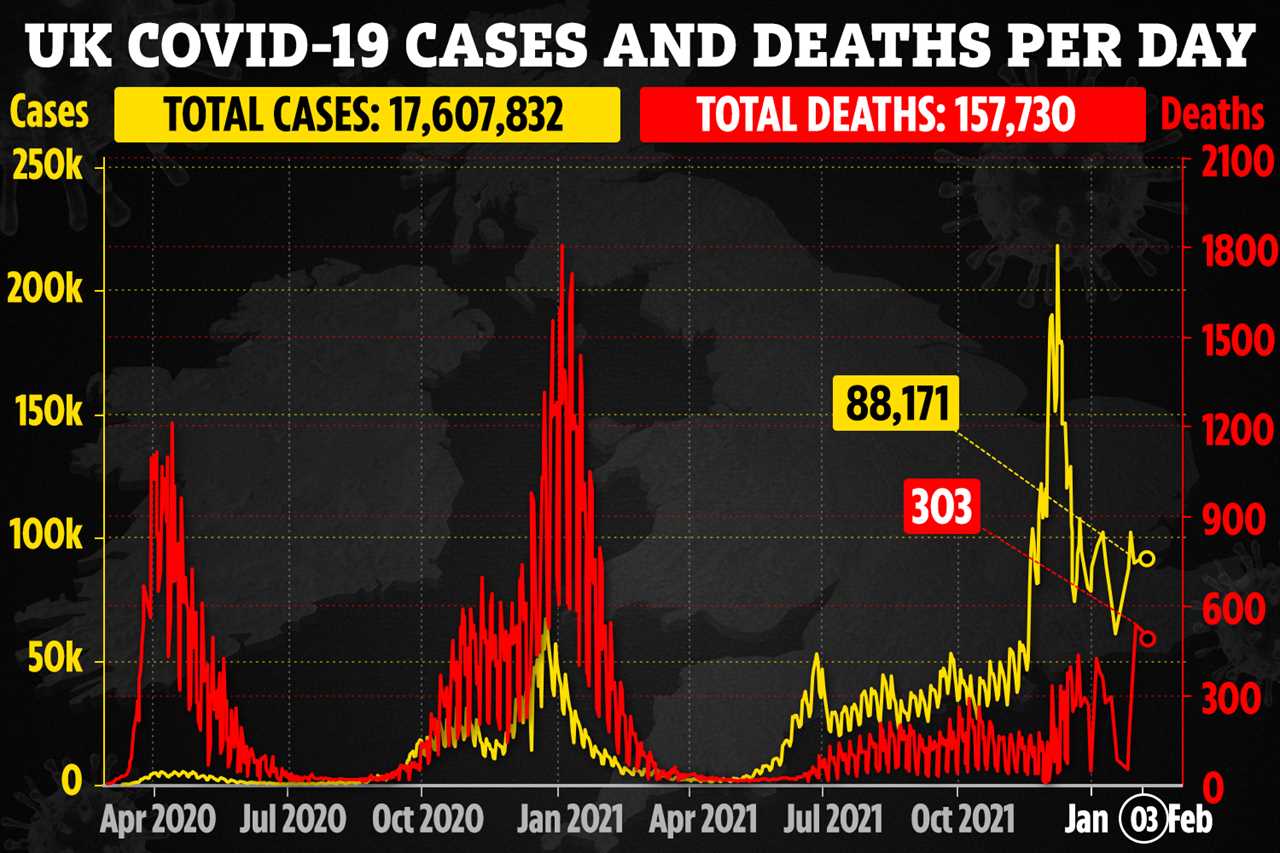THE CRUCIAL coronavirus R rate has crept up this week and could be as high as 1.3, new data has revealed.
It comes as one in 20 people in England now have Omicron, with vaccines keeping the majority of people out of hospital and free of severe infection.


Data from the UK Health Security Agency (UKHSA) shows that the R rate in England is currently between 0.8 and 1.1 – up from last week’s rate of 0.7 – 0.9.
Last week’s rate had been the lowest on record since March 2021, when the UK was still in lockdown after the Alpha variant had swept in over the Christmas period.
Hospital rates remain low across the UK and deaths were down by 43 per cent – with a further 303 being recorded.
It could be as high as 1.3 in the South East of England, with the growth rate in the region also sitting between 0 to +5.
The growth rate across England is -3 per cent per day to +1 per cent.
A growth rate of this size means that the number of new infections could be broadly flat, growing by up to 1 per cent or shrinking by up to 3 per cent every day.
The South West follows the South East, with an R rate of 1 to 1.2.
The Midlands and the East of England are both sat between 0.8 -1.1 and London and the North East and Yorkshire are sat between 0.8 – 1.0.
The North West has the lowest R rate in the country and is currently between 0.7 to 1.
Over the last week infections have remained stable despite a slight increase due to a change in metric in the way the government counts data.
Yesterday a further 88,171 people tested positive with the bug – with some experts claiming the true toll could be much higher, as they claim some people are not reporting their negative lateral flow tests.
But most people who are testing positive are experiencing cold-like symptoms, as Omicron has been proven to be milder than the variants that have come before it.
Boosters and vaccines have proved vital in the fight against Covid and data from the Office for National Statistics (ONS) found that the risk of death involving Covid-19 is 93 per cent lower for people who have had a booster or third dose of vaccine compared with unvaccinated people
Many children are still yet to have vaccines and data from the ONS states that the percentage of people testing positive remained very high for those aged 2 years to school Year 6 in the week ending 29 January 2022.
Rates also increased in those in school Year 7 to school Year 11 and for those aged 35 to 49 years.
But the percentage of people testing positive decreased in those aged 25 to 34 and those over 50.
A separate report from the ONS also found that mortality rates for coronavirus deaths were found to be “consistently lower” across all age groups for those who had received an extra dose of the vaccine compared with those who had received no doses.
Among fully-vaccinated people in England who had received a booster or third dose at least 21 days previously, the age-adjusted risk of death involving Covid-19 between July and December last year was 93.4 per cent lower compared with unvaccinated people, while it was 81.2 per cent lower for those who had received only two doses.







